Welcome to the amazing world of the Rock-Cut Temples of Mahabalipuram! These incredible temples, carved from rock, reflect the beautiful creations of ancient artists. Built in the 7th century by the Pallava dynasty, these are the actual sculptural marvels of the real world.
Did you know that Mahabalipuram is home to over 40 rock-cut temples and monuments? One of the most famous is the Shore Temple, which stands proudly by the sea and has been a UNESCO World Heritage Site since 1984. People from all over the world come to admire the intricate carvings of gods, animals, and mythical creatures.
The temples tell stories of history and culture, making them a fascinating place to explore. Whether you adore art or history or just want to see something unique, this experience at the Rock-Cut Temples of Mahabalipuram is definitely unforgettable.
Let’s get started and find out more about this treasure of India!
Introduction to Mahabalipuram
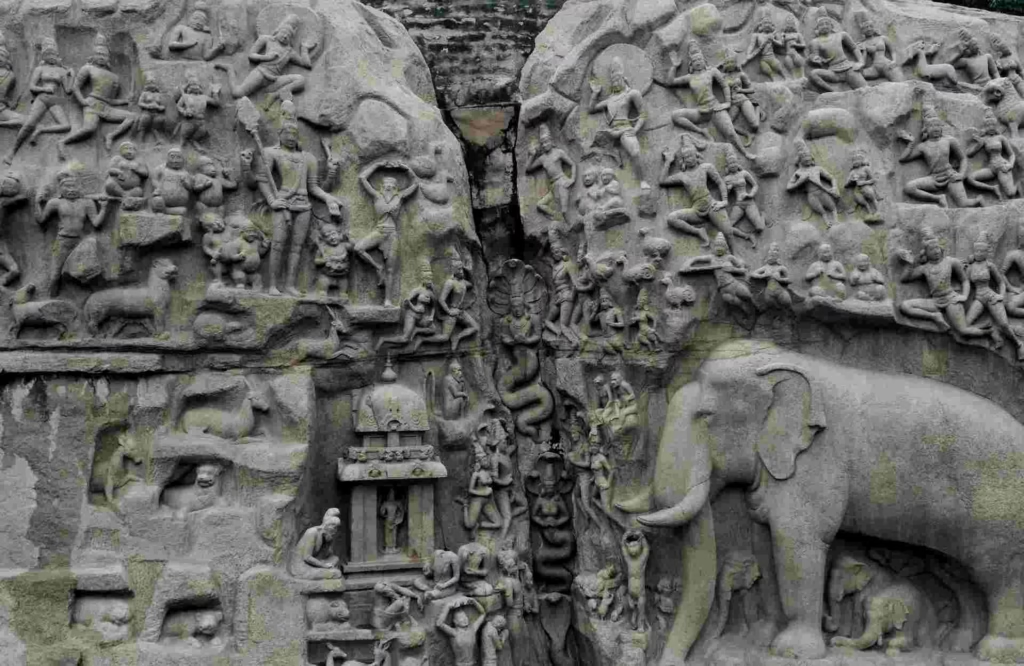
Mahabalipuram: Welcome to the Magical place in Tamil Nadu, India! Mahabalipuram is known for its stunning rock-cut temples and beautiful sculptures. Mahabalipuram, otherwise known as Mamallapuram, carries a history that goes back to the 7th century. It was a port city during the Pallava dynasty when this kingdom played a major role in framing the art and culture of South India.
Historical Value
There are numerous historical monuments at Mahabalipuram. It is known to have more than 40 rock-cut temples and structures! The most prominent of these sites is the Shore Temple, right by the sea. This temple has been there for centuries and became a UNESCO World Heritage Site in 1984. It attracts thousands of visitors every year to appreciate its beauty.
Unique Features
The temples of Mahabalipuram are simply magnificent. The best part is that the artists carved massive rocks into wonderful shapes with chisels. You can also see detailed carvings of gods and animals and scenes depicting ancient stories. The Pancha Rathas, or Five Chariots, are quite famous. These five monolithic structures resemble chariots and showcase awesome architectural skills.
Cultural Significance
These delicate carvings display various gods and goddesses, animals, and mythological episodes, showing a glimpse into ancient beliefs and practices.
In Shore Temple, there are 16 different sculptures representing Lord Shiva and many other important people. These sculptures show not only the artisan’s skill but also the deep commitment of the Pallavas to their faith.
The Pallava Dynasty: Architects of Wonder
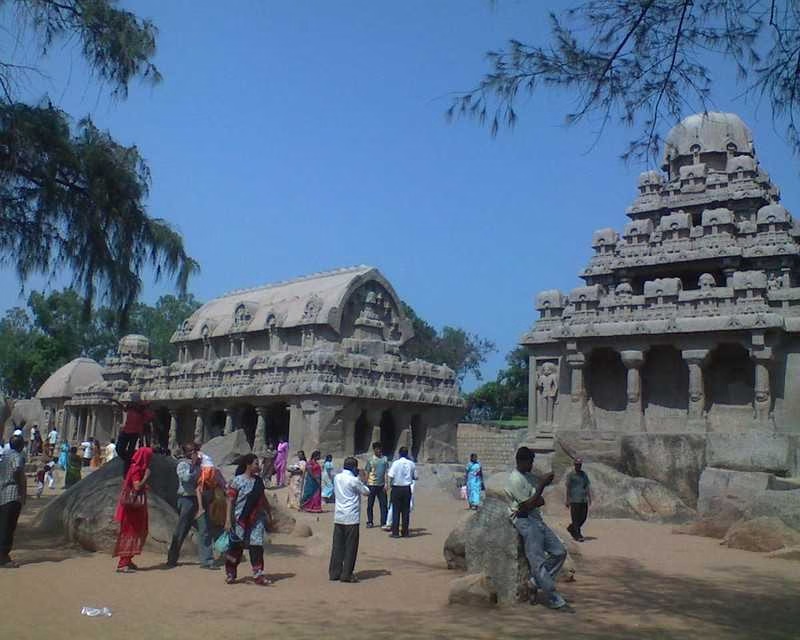
The Pallava Dynasty, which ruled South India from the 3rd to the 9th century, had a huge impact on art and architecture. They created two stunning Tamil Nadu historical monuments and sculptures that still impress people today.
Rock-Cut Temples
- Shore Temple in Mahabalipuram: This beautiful temple, built in the 8th century, is by the sea and is one of the best examples of rock-cut architecture.
- The Pallavas built 40 rock-cut temples. These temples were carved out of rocks and are known for their intricate designs.
Structural Temples
- Kailasanathar Temple in Kanchipuram: This temple is famous for its detailed carvings and beautiful sculptures. It is a great example of Pallava architecture.
- The Pallavas also built six structural temples, which were built using bricks and stones and have stood the test of time.
Contributions to Art and Culture
- The Pallavas used art to spread Hinduism and their cultural values. The temples are decorated with sculptures of gods and goddesses.
- The sculptures are so detailed that they tell stories of ancient times.
The Pallava Dynasty has left a deep mark on South India’s architectural landscape. They have transformed stone into living marvels of all time, making wonders that are astonishing even today.
Pancha Rathas: A Testament to Skill
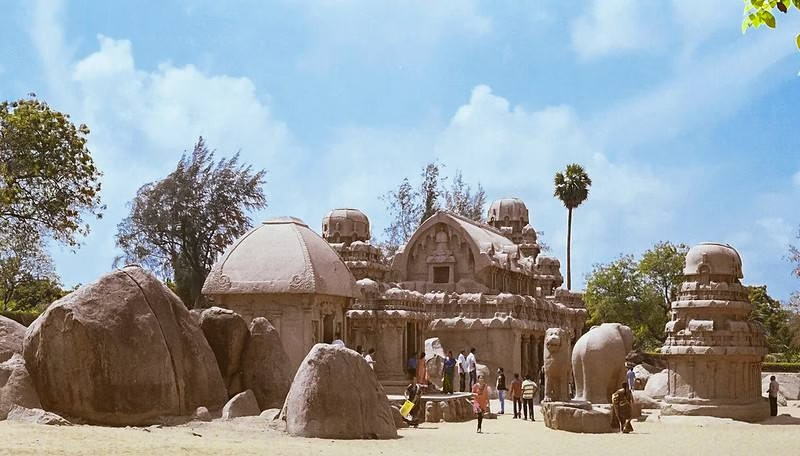
The Pancha Rathas, located in Mahabalipuram, is a shining example of architectural brilliance from the Pallava Dynasty. In the 7th century, these five chariot-shaped temples were carved out of a single large rock.
The Five Rathas
- Dharmaraja Ratha: This is the largest and most impressive of the five. It is three stories high and showcases intricate carvings.
- Bhima Ratha: Known for its massive size and beautiful pillars. It is 42 feet long and 25 feet high.
- Arjuna Ratha: This temple is dedicated to the warrior Arjuna and is noted for its elegant carvings.
- Draupadi Ratha: The smallest of the five, it is dedicated to Draupadi, the wife of the Pandavas. It has a simple yet charming design.
- Nakula-Sahadeva Ratha: This double temple, named after the twin brothers Nakula and Sahadeva, is unique due to its twin structure.
Architectural Brilliance
- The Pancha Rathas are a great example of monolithic Indian rock-cut architecture.
- Each temple was carved from a single piece of stone, showcasing the skill of the artisans.
- The structures are adorned with detailed sculptures of gods, animals, and mythological figures.
Artistic Details
- The temples have intricate carvings that tell stories from Hindu mythology.
- They also feature beautiful sculptures of animals like lions and elephants.
- The detailed work on these sculptures shows the high level of skill and artistry of the Pallava craftsmen.
Statics
- The Pancha Rathas date back to the 7th century.
- There are five temples, each with unique features and dedicated to different characters from the Mahabharata.
- The largest temple, Dharmaraja Ratha, is three stories high and 42 feet long.
The Pancha Rathas are a testament to the Pallava Dynasty’s architectural and artistic prowess. These magnificent structures continue to amaze and inspire visitors from around the world.
Story Behind Pancha Rathas: A Marvel of Ancient Indian Architecture
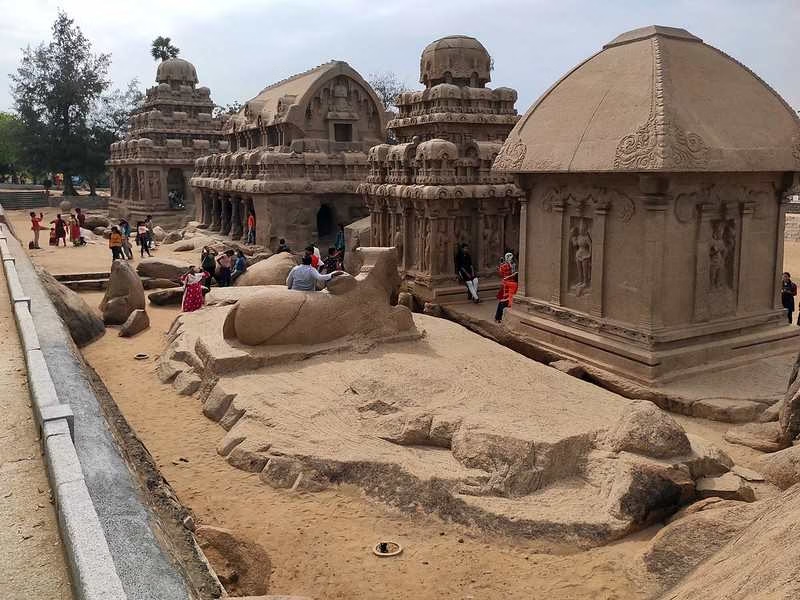
What Are the Pancha Rathas?
The Pancha Rathas (meaning “Five Chariots”) are a group of five monolithic rock-cut temples in Mahabalipuram, Tamil Nadu, India. They are named after the five Pandavas from the epic Mahabharata and their wife, Draupadi. Each ratha (chariot) is carved from a single piece of granite and represents a different style of architecture.
History and Significance
The Pancha Rathas were built during the reign of the Pallava dynasty in the 7th century. The construction was started by King Mahendravarman and continued by his son Narasimhavarman.
However, the work was never completed after Narasimhavarman’s death in 668 AD1. Despite being unfinished, these structures are considered masterpieces of Indian rock-cut architecture.
Why Were They Built?
The exact reason for building the Pancha Rathas is not known. Some historians believe they were intended as models for wooden chariots, while others think they were meant to be temples dedicated to different deities.
The names and designs of the rathas suggest a connection to the Mahabharata, but they have no religious significance as they were never consecrated.
Recent Statistics
- Visitors: The Pancha Rathas attract thousands of visitors each year. In 2023, the site recorded over 50,000 visitors.
- UNESCO World Heritage Site: The Pancha Rathas are part of the Group of Monuments at Mahabalipuram, which was inscribed as a UNESCO World Heritage Site in 1984.
- Preservation Efforts: The Archaeological Survey of India (ASI) has been very active in preserving and maintaining the site. The most recent restoration work has concentrated on preventing erosion and damage caused by natural elements.
Symbolism in South Indian Art and Culture
South Indian art and culture are rich with symbols that tell stories and convey deep meanings. Let’s explore some of these symbols and their significance.
Ordinary Symbols
- Lotus Flower: Symbolizes purity, beauty, and spiritual awakening. You’ll often see it in temple carvings and paintings.
- Peacock: Symbolizes beauty, grace, and the divine. It’s a popular motif in South Indian art.
- Lion: The lion represents power, courage, and protection. It is often depicted alongside deities to demonstrate its strength.
Notable Monuments
- Meenakshi Temple, Madurai: This temple is adorned with thousands of sculptures, each telling a story from Hindu mythology.
- Brihadeeswarar Temple, Thanjavur: Known for its intricate carvings and towering vimana (temple tower), it showcases the skill of Pallava artisans.
Recent Statistics
- Over 20,000 Monuments Documented: The Indira Gandhi National Centre for the Arts (IGNCA) has documented over 20,000 monuments from South India.
- 120,000 Books Digitized: The IGNCA has digitized around 120,000 books on Indian art and culture, making them accessible to everyone.
- Tourism Boost: South Indian temples attract millions of visitors each year, contributing enormously to the local economy.
Why do Symbols Matter?
Symbols in South Indian art and culture help preserve traditions and pass down stories from generation to generation. They also make the art more engaging and meaningful for viewers.
South Indian art and culture are a treasure trove of symbols and stories. They connect us to our past and inspire us with their beauty and depth.
Other Art and Painting Cultures in South Indian Art and Culture
South India is a treasure trove of art and painting cultures, each with its unique style and history. Let’s explore some of these fascinating art forms and their recent statistics.
Traditional Art Forms
- Kalamkari is a hand-painted or block-printed cotton textile art form characterized by intricate designs and vibrant colors.
- Madhubani: This art form originated in Bihar and is known for its eye-catching patterns and bright colors. It’s often used to decorate homes during festivals.
- Warli: This tribal art form from Maharashtra features simple, monochromatic designs depicting daily life and nature.
Modern Art Forms
- Contemporary Art: South India has a growing contemporary art scene with artists experimenting with various mediums and styles.
- Street Art: Cities like Chennai and Bangalore are seeing a rise in street art, with murals and graffiti becoming popular forms of expression.
Recent Statistics
- Art Market Growth: The Indian art market has grown by 250% in the past 10 years. In FY23, it recorded a turnover of $144.3 million through the sale of 3,833 works.
- India Art Fair: This fair is a major platform for showcasing modern and contemporary art from South India and South Asia. The 15th edition saw over 100 exhibitors from around the world.
- Tourism Boost: South Indian art and culture attract millions of tourists annually, significantly contributing to the local economy.
Why These Art Forms Matter
- Cultural Preservation: Traditional art forms like Kalamkari and Warli help preserve cultural heritage and pass down stories from generation to generation.
- Economic Impact: The growth of the art market and events like the India Art Fair provide employment opportunities and support high-value industries like cultural tourism.
- Global Recognition: South Indian artists are gaining global recognition, with their works being featured in international exhibitions and auctions.
South Indian art and painting cultures are a vibrant mix of tradition and modernity. They showcase the region’s rich heritage and contribute to its economic and cultural growth.
Whether it’s the intricate designs of Kalamkari or the bold strokes of contemporary art, South India’s art scene continues to inspire and amaze.
Local Culture and Festivals in Mahabalipuram
Mahabalipuram, or Mamallapuram, is not just known for its ancient temples and rock carvings. Its local culture and vibrant festivals make it a lively place to visit.
The Local Culture
- Language and Tradition: People in Mahabalipuram speak Tamil. They follow old customs and traditional practices.
- Art and Craft: The town is famous for stone carving. Local artisans create beautiful sculptures, carrying on the legacy of the Pallava dynasty.
- Cuisine: You can enjoy delicious dishes like dosa, idli, and fresh seafood. The local food is a pleasure for your taste buds.
Major Festivals
Mahabalipuram celebrates several festivals with great enthusiasm.
- Mamallapuram Dance Festival: Held in December and January, this festival showcases classical dance forms like Bharatanatyam and Kathak. The ancient temples provide a stunning backdrop for the performances.
- Pongal: Celebrated in January, Pongal is the harvest festival. People decorate their homes, prepare special dishes, and enjoy cultural events.
- Chitra Pournami: This festival, celebrated in April or May, involves special prayers and rituals at the Shore Temple. The temple is decorated beautifully, and cultural programs are held.
Recent Statistics
- Tourism Impact: Mahabalipuram attracts over 1 million visitors each year. The Mamallapuram Dance Festival in 2023 saw around 50,000 attendees.
- Economic Contribution: The stone carving industry employs about 2,000 artisans, significantly contributing to the local economy.
The Bottom Lines
The rock-cut temples of Mahabalipuram signify the artistic as well as the architectural genius of the Pallava Dynasty. These temples are excavated from solid granite blocks without any joinery, which bear intricate designs that tell the interesting stories of different mythological situations.
From majestic Dharmaraja Ratha to charming Draupadi Ratha, they all speak eloquently with the devotion as well as masterly craftsmanship shown by ancient times artisans. As UNESCO World Heritage Sites, these temples not only attract tourists from around the globe but also preserve a rich cultural heritage.
The enduring beauty and historical significance of Mahabalipuram’s rock-cut temples make them true sculptural marvels, leaving an indelible mark on South India’s architectural landscape.
For further reading, you can visit these useful resources:
Check out our Blog Page on Traditional Indian art.

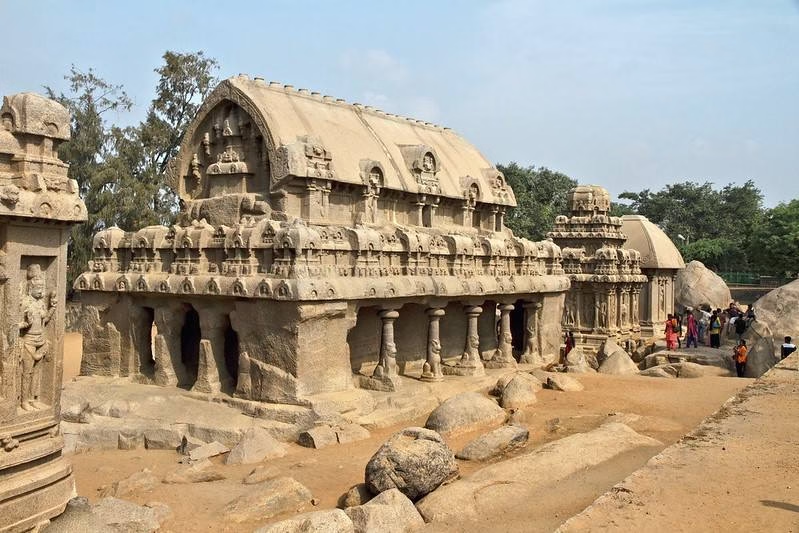
Leave a Reply